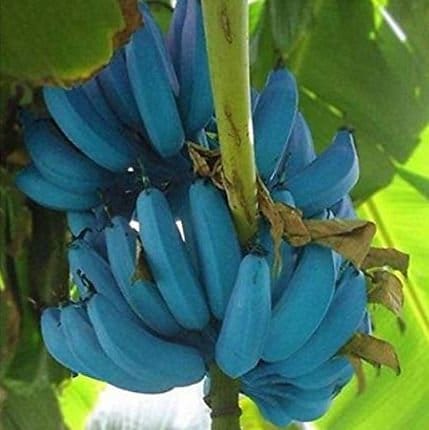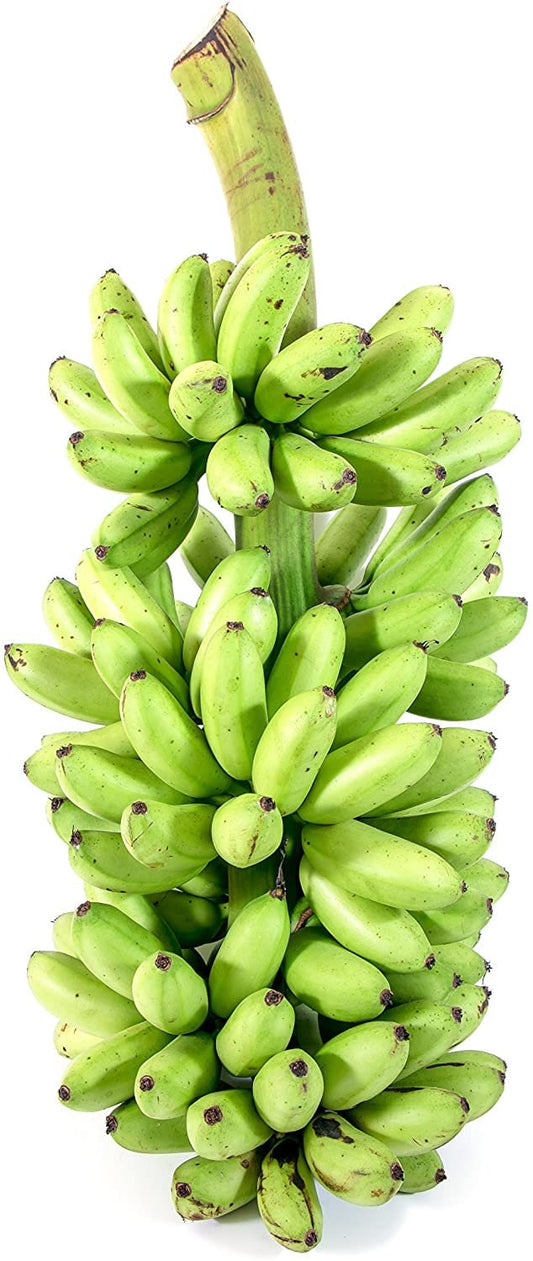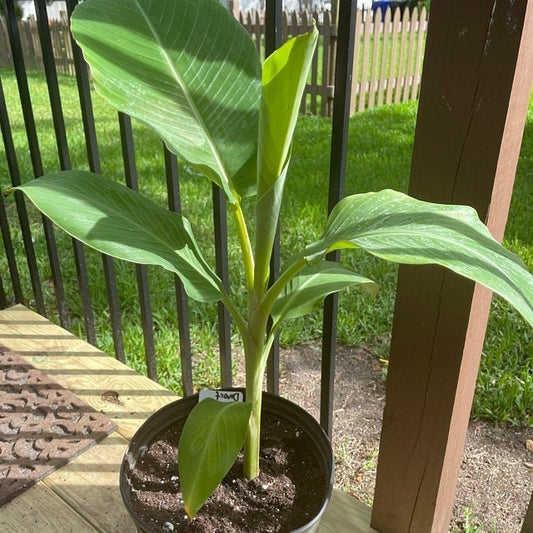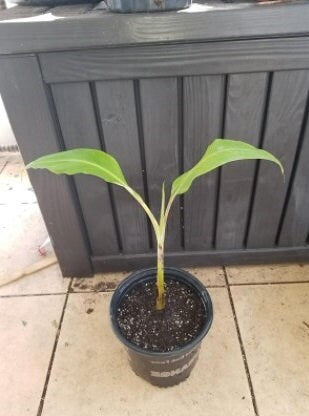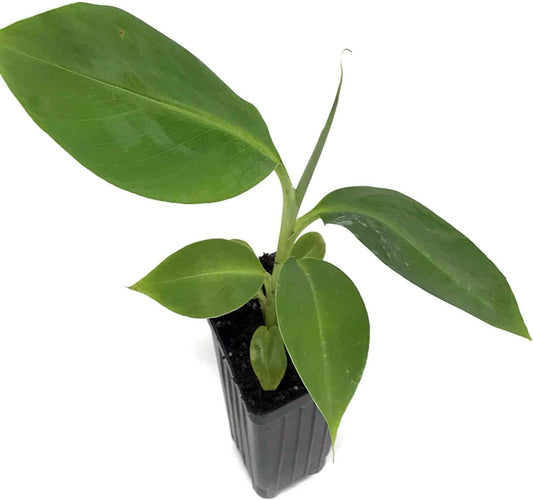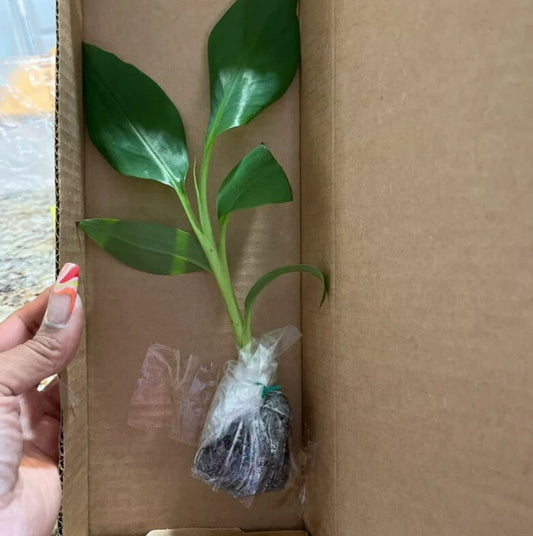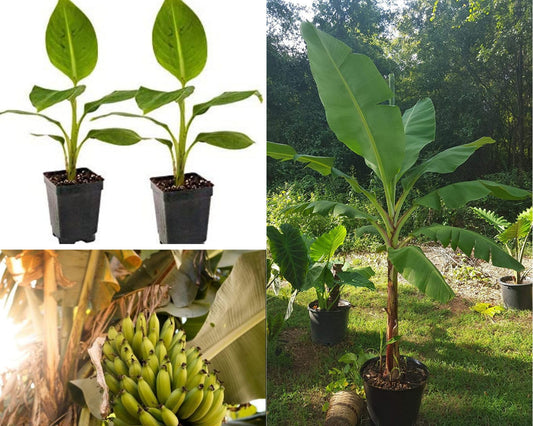Cultivating the Classic: How to Grow Grand Nain Bananas
Grand Nain bananas, known for being the variety behind the iconic Chiquita banana, are a staple in both commercial plantations and home gardens. Loved for their sweet taste, robust growth, and relatively short stature, Grand Nain bananas offer a practical and rewarding gardening experience. Suitable for USDA zones 9-11, this variety thrives in warm, tropical to subtropical climates, producing bountiful bunches of the classic yellow bananas that are a favorite worldwide. Whether you're looking to add a tropical touch to your garden or dreaming of harvesting your own home-grown bananas, this guide will walk you through the essentials of growing Grand Nain bananas.
Understanding Grand Nain Bananas
Grand Nain ("Great Dwarf") bananas are known for their compact growth, reaching heights of only 6-8 feet, making them an ideal choice for home gardens where space might be limited. Despite their shorter stature, they don't skimp on productivity, often yielding large clusters of bananas that are rich in flavor and nutritional value.
Selecting the Right Location
1. Sunlight: Grand Nain bananas require full sun, with at least six to eight hours of direct sunlight daily to thrive and produce fruit.
2. Soil Conditions: These bananas prefer well-draining, fertile soil rich in organic matter. They perform best in slightly acidic to neutral pH levels (5.5-7.0). Ensuring proper soil preparation is crucial for supporting their growth.
Planting Grand Nain Bananas
1. Best Time to Plant: The optimal time to plant Grand Nain bananas is in the spring or early summer, once the danger of frost has passed and soil temperatures have warmed.
2. Planting Process: If starting with a young plant or sucker, dig a hole that's twice as wide and as deep as the root ball. Incorporate compost or aged manure to enrich the soil, then plant the banana, backfilling the hole and watering thoroughly. For container planting, select a large pot with drainage holes and use a quality potting mix.
Care and Maintenance
1. Watering: Regular watering is crucial for bananas, especially during hot, dry periods. Keep the soil consistently moist but not waterlogged. Mulching can help retain soil moisture.
2. Mulching: Apply a thick layer of organic mulch around the base of the plant to help retain soil moisture, regulate soil temperature, and suppress weed growth.
3. Fertilization: Feed your Grand Nain banana plant with a balanced, slow-release fertilizer every month during the growing season. They are heavy feeders, so ensuring they get enough nutrients is key to their growth and fruit production.
4. Pruning: Regularly remove any dead leaves and manage suckers by allowing only 2-3 vigorous ones to remain around the main plant. This helps focus the plant's energy on fruit production.
Harvesting Grand Nain Bananas
Grand Nain bananas typically take 9-12 months from planting to produce fruit. The bananas are ready to harvest when they turn from deep green to light green, and the flower at the end becomes dry and easily removable. Cut the entire stalk and hang it in a shaded, well-ventilated area to ripen evenly.
Overcoming Challenges
While Grand Nain bananas are relatively disease-resistant, they can still face challenges such as pests and diseases common to bananas. Implementing preventive measures, such as proper spacing and cleanliness around the plants, can help ensure a healthy crop.
Conclusion
Growing Grand Nain bananas is a delightful venture that brings the taste of the tropics right to your backyard. By providing the right care and conditions, you can enjoy the lush foliage and sweet fruits of the Grand Nain banana, adding both beauty and taste to your garden. Whether you're a seasoned gardener or exploring new fruit cultivation for the first time, Grand Nain bananas offer a resilient and fruitful addition to any tropical or subtropical garden, promising delicious rewards for your efforts.
